What Is Horumon?
Horumon refers to the offal or specific internal parts of animals.
In Japan, beef, chicken, and pork are the common horumon varieties and are used in various dishes.
In particular, yakiniku (Korean-style BBQ) and nabe (hot pot) are some of the most popular ways of enjoying it.
Horumon served in yakiniku pairs well with beer, sours, and other alcoholic beverages, and is loved by many for its unique texture, juiciness, and flavor.
Horumon is served not only at yakiniku restaurants, but also izakaya (Japanese-style pubs) restaurants and places that specialize in horumon.
Horumon consumption in Japan began to spread gradually with the introduction of Western culture in the late 19th century, when a meat diet was encouraged.
Later, as the number of yakiniku restaurants grew after World War II, horumon became popular among the general public.
The offal meat enjoyed in Japan is fresh and delicious.
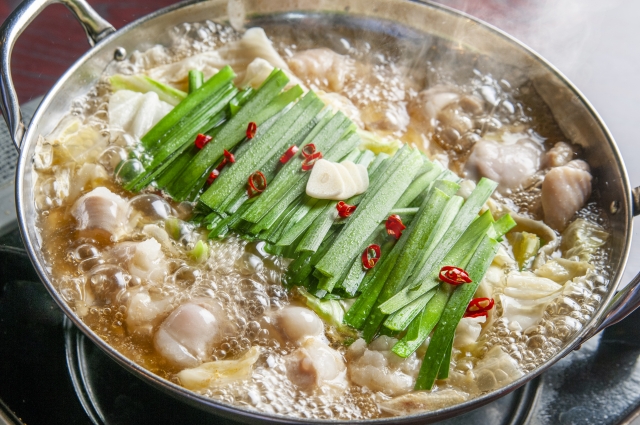
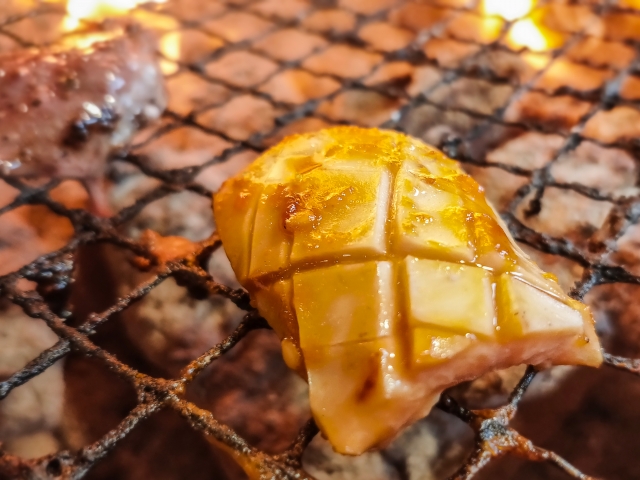
Why Do Japanese People Love Horumon So Much? Here's Why
1. The “Mottainai” Spirit and Culinary Ingenuity
At the heart of Japanese culture is the value of utilizing every part of a food ingredient without waste.
Horumon was once considered a “discarded part” (known as horumon, from the word meaning “to throw away”), but with the idea of “why waste it if it’s edible?”, people began experimenting with different cooking methods.
Grilling, boiling, frying, or stir-frying—each horumon cut now has its ideal way of preparation, reflecting Japan’s cultural approach of respectfully making the most of ingredients.
2. Addictive Textures and Deep Umami Flavor
Each horumon cut offers a completely different texture—chewy, springy, or juicy with melting fat.
These sensations stimulate the senses, which is a big part of why horumon becomes so addictive.
Also, unlike lean red meat, horumon has a distinct “offal umami” flavor that perfectly matches the Japanese palate, especially among yakiniku lovers.
3. Perfect Pairing with Beer and Alcohol
Horumon is often heavily seasoned, making it an excellent match with beer, shochu, or highballs.
This deep connection with izakaya (Japanese pubs) culture has made horumon a go-to food for many Japanese people after work.
For some, “a drink with horumon” has become a daily way to unwind. This strong presence as a perfect drinking companion has played a big role in horumon’s popularity.
Varieties of horumon
Horumon can be enjoyed in a variety of ways.
In this entry, we will present some of the most typical horumon dishes in Japan.
Yakiniku (Korean-Style BBQ)
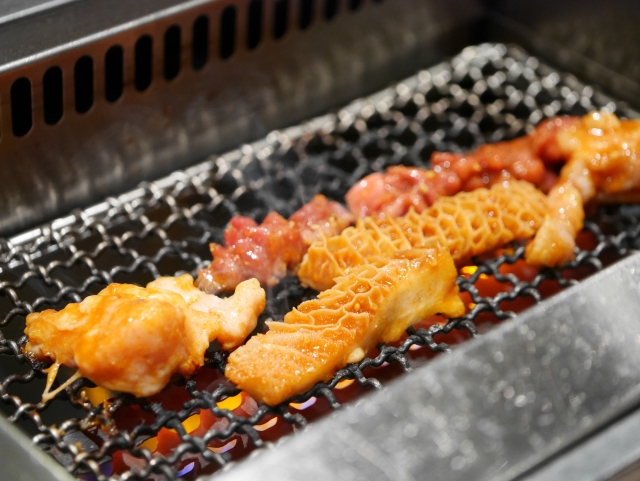
Horumon served in yakiniku is also called “horumon-yaki.”
It is a popular dish at Japanese yakiniku restaurants.
The fatty varieties of horumon feature a juicy and full flavor, seasoned with salt or sauce and grilled.
Another unique feature of horumon meat is its variety of textures.
They differ depending on the part, with many being crunchy or jiggly.
Horumon-Nabe (Offal Hot Pot)
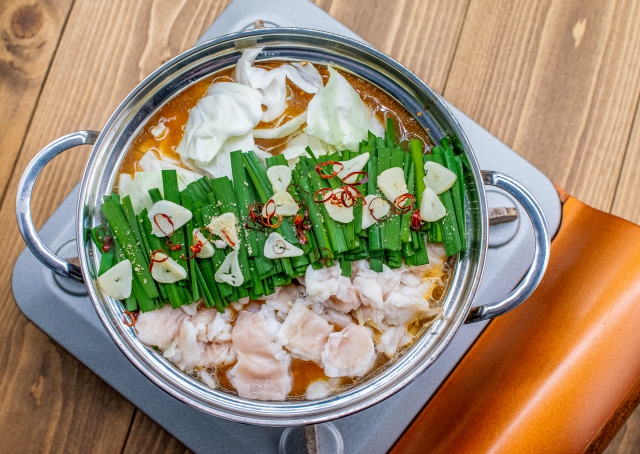
The dish is commonly called “motsu-nabe” in Japan.
It is prepared by simmering beef or pork (mainly intestines and stomach) offal with vegetables, such as garlic, chives, and cabbage, with tofu, in a miso or soy sauce-based broth.
Motsu-nabe is especially popular during the cold season.
Yakitori (Chicken Skewers)

Some types of yakitori use chicken entrails, which are served grilled.
Like other yakitori varieties, they are seasoned with salt or sauce, then grilled.
The offal used for yakitori includes liver, heart, and gizzard; each part has its unique taste and texture.
Horumon Yakisoba (Stir-Fried Noodles with Offal)
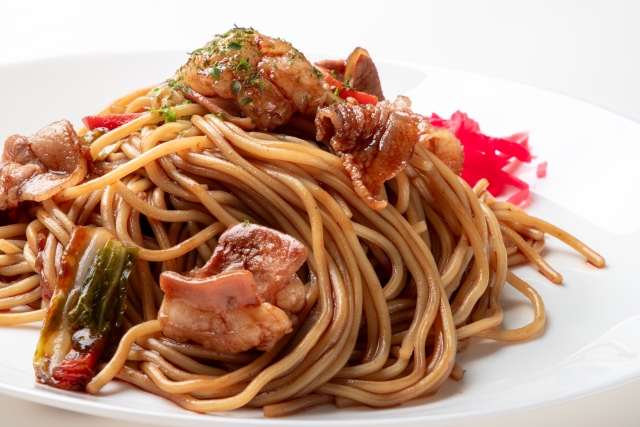
A yakisoba noodle dish cooked with horumon.
The flavors of the horumon, vegetables, and noodles intertwine with each other, giving the dish a unique, enjoyable texture and taste.
It is a well-known dish in Yokote City in Akita, Ono City in Hyogo, and eastern Tottori in Japan.
Horumon-Itame (Stir-Fried Offal)
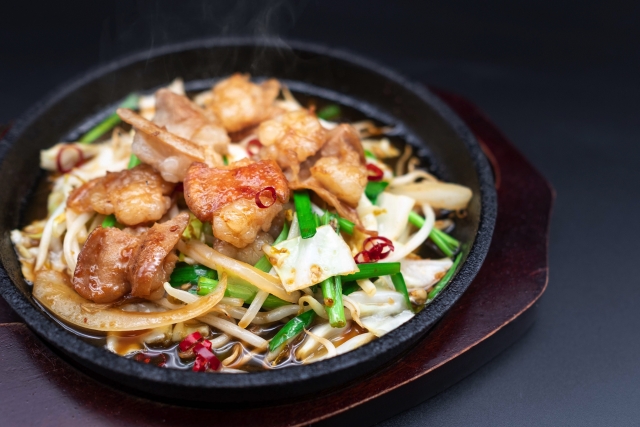
The dish is made by stir-frying horumon with vegetables and is seasoned with garlic, ginger, and a soy sauce-based sauce.
It is also a popular accompaniment to beer.
Horumon Yaki-Udon (Stir-Fried Udon Noodles with Offal)

An udon noodle dish with horumon added as a topping.
The horumon's flavor melts into the soup, allowing you to enjoy its deep taste.
Also called “horumon udon,” the dish is a specialty of Sayo Town in Hyogo and the middle eastern part of the Mimasaka region in Okayama.
Horumon Cuts
In this entry, we will explore some of the parts used as the horumon offal meat in Japan.
With the wide variety of cuts, find your favorite and try it out.
Liver

This cut refers to beef, pork, or chicken liver and is rich in iron and vitamin A.
You can enjoy it as yakiniku (Korean-style BBQ) or yakitori (Chicken skewers).
Hatsu (Heart)
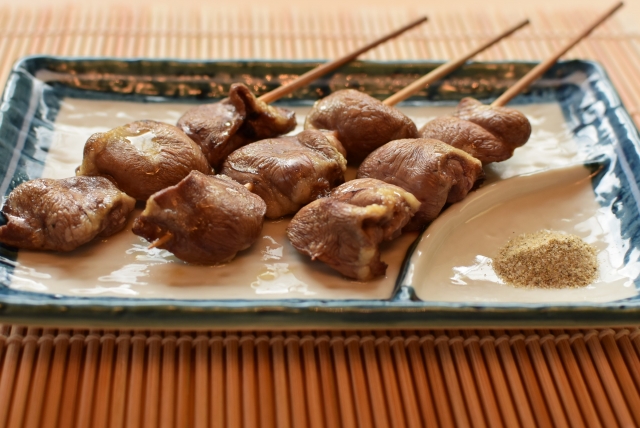
This is beef, pork, or chicken heart, which has a chewy texture and a strong flavor.
The part can be enjoyed as yakiniku, yakitori, horumon-itame (stir-fried offal), horumon-yaki (grilled horumon), and other dishes.
Sunagimo (Gizzard)
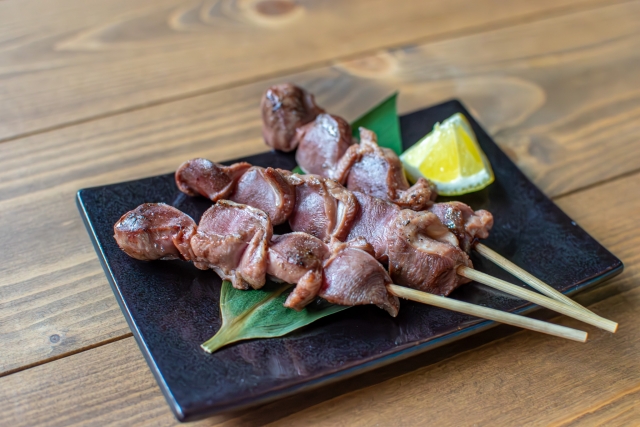
A part of the chicken stomach.
It has a strong, chewy texture with a condensed, delicious flavor.
It is enjoyed as yakitori.
Shimacho (Large Beef Intestine)
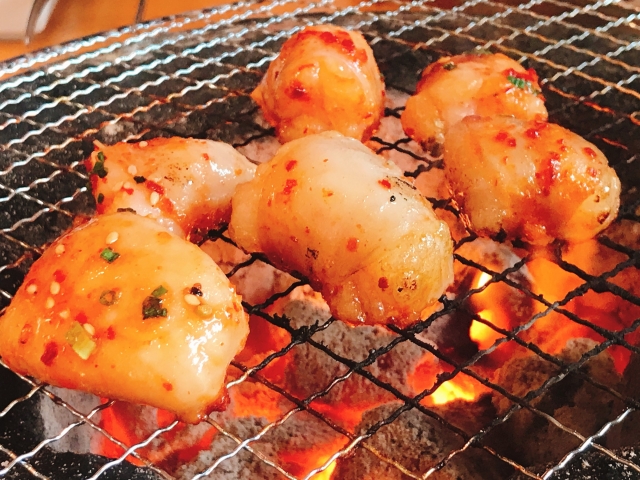
The cut refers to the large intestine of the cow and is characterized by its striped pattern.
It is also called “tecchan” or “shiro.”
It can be served as yakiniku, horumon yakisoba (stir-fried noodles with offal), and other dishes.
Kopuchan (Small Beef Intestine)
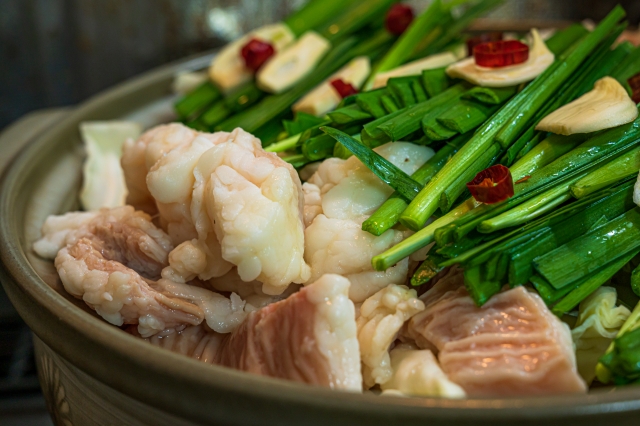
The cut refers to the small intestine of the cow and is rich in collagen.
Also called “hoso,” some yakiniku restaurants may serve this cut simply as “horumon.”
You can enjoy it as motsu-nabe (offal hot pot) or yakiniku.
Mino (Beef Rumen)

Mino is the first stomach of the cow.
It has a chewy, crunchy texture, and the savory flavor spreads throughout month as you chew it.
The cut is served as yakiniku, and other dishes.
Yakiniku restaurants typically offer “mino” (regular mino) and “jo-mino” (premium mino), which features a crunchy texture.
Hachinosu (Beef Honeycomb Tripe)
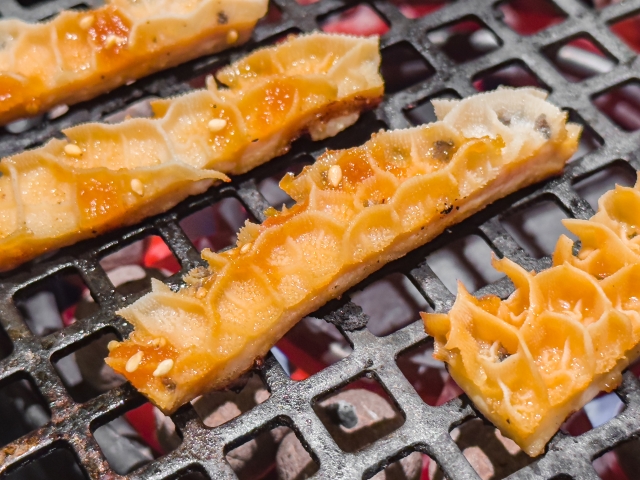
With its name derived from its beehive-like shape, this cut is the second stomach of the cow.
The cut is great for enjoying the unique flavor of offal.
It is served as yakiniku, and other dishes.
Senmai (Beef Book Tripe)
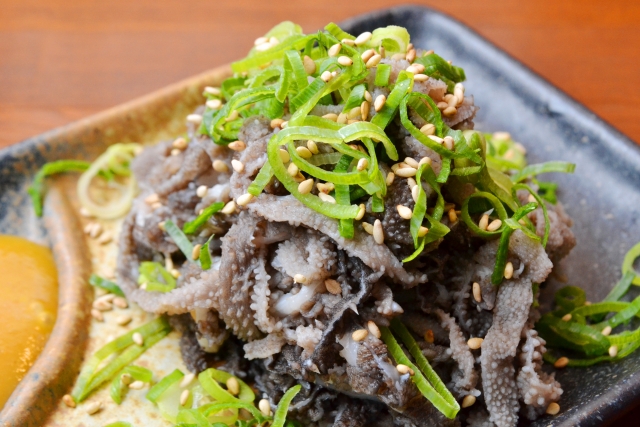
The third stomach of the cow offers a plump texture.
A dish called "senmai-sashi" is made by boiling the meat and cutting it into thin strips, which are served with a spicy dipping sauce.
Giara (Beef Reed Tripe)
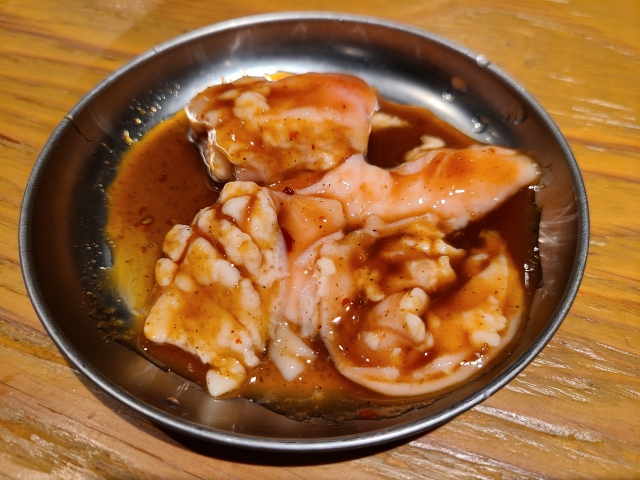
Giara is the fourth stomach of the cow with a unique texture and rich savory flavor.
The cut is served as yakiniku, and other dishes.
How to eat horumon
It enjoyed in a variety of ways, depending on how it is prepared.
In this entry, we will introduce how to eat the most common horumon dishes in Japan.
Yakiniku (Korean-Style BBQ)
Place the horumon meat on a hot grill (roaster, Japanese small charcoal grill, etc.) and cook it slowly.
Pass the heat through the entire hormone, flipping it halfway through.
When cooked, place the meat on a small plate and dip it in sauce or other condiments.
Horumon-Nabe (Offal Hot Pot)
As the pot will be served with all the ingredients placed in it, simply heat the pot for cooking.
You can start eating the pot when the horumon (motsu meat) is well cooked and the vegetables are soft.
Dish out the food in bowls and enjoy.
Yakitori (Chicken Skewers)
Order your yakitori with salt or tare (sauce).
When served, eat it straight from the skewer or remove it from the skewer with chopsticks and enjoy.
Horumon Yakisoba (Stir-Fried Noodles with Offal)
Enjoy it as you like with chopsticks or a fork.
Horumon-Itame (Stir-Fried Offal)
Enjoy it as you like with chopsticks or a fork.
Recommended with rice.
Horumon Yaki-Udon (Stir-Fried Udon Noodles with Offal)
Enjoy it as you like with chopsticks or a fork.



